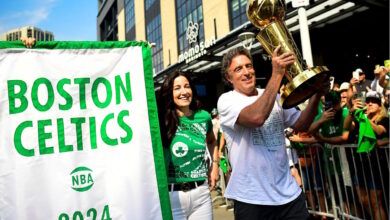The Chicago Cubs: A Journey Through Baseball History
Welcome to a vibrant journey through the heart of baseball history, guided by the indomitable spirit of the Chicago Cubs. One of the most storied franchises in Major League Baseball, the Cubs’ tale is a rich tapestry woven with triumph, heartbreak, legendary figures, and an undying bond with their fans. Let’s embark on a tour that spans over a century, capturing the essence of a team that’s much more than just a baseball club.
The Early Years: Birth of a Legacy
The Chicago Cubs, originally known as the White Stockings, were a founding member of the National League in 1876. This era marked the dawn of professional baseball, and the team quickly established itself as a powerhouse, clinching the inaugural National League Championship. The early years were characterized by dominance, with stars like Cap Anson leading the team to glory.
Wrigley Field: A Monument to Baseball
In 1914, the Cubs moved to Weeghman Park, which would later be known as Wrigley Field, their beloved home to this day. Wrigley Field isn’t just a ballpark; it’s a living museum of baseball, famed for its ivy-covered outfield walls, iconic red marquee, and manual scoreboard. The charm of Wrigley Field embodies the soul of the Cubs and offers a nostalgic journey to baseball lovers.
The Tumultuous Twentieth Century
The early 20th century saw the Cubs reaching the pinnacle of success, including back-to-back World Series titles in 1907 and 1908. However, the subsequent decades were a rollercoaster of highs and lows. The Cubs made several World Series appearances but were unable to secure the championship, leading to the infamous “Curse of the Billy Goat” in 1945, which became a part of Cubs lore.
Despite the absence of World Series victories, the Cubs boasted legendary players like Ernie Banks, known affectionately as “Mr. Cub,” whose infectious enthusiasm and love for the game left an indelible mark on the franchise and its fans. Ron Santo and Billy Williams were other iconic figures who exemplified the Cubs’ spirit during their careers.
Breaking the Curse: The 2016 World Series
The narrative of the Chicago Cubs took a dramatic turn in 2016, a year that would be etched in history. Under the guidance of manager Joe Maddon and with stars like Anthony Rizzo, Kris Bryant, and Jake Arrieta, the Cubs shattered a 108-year drought to win the World Series. The victory was a cathartic moment for Cubs fans worldwide, symbolizing hope, resilience, and the end of the so-called curse.
The Cubs Culture: Beyond Baseball
The Chicago Cubs represent more than just baseball; they are a cultural phenomenon. The team has fostered a unique bond with its fans, characterized by loyalty, passion, and a sense of community. From the iconic “W” flag, signaling a Cubs victory, to the tradition of singing “Take Me Out to the Ball Game” during the 7th-inning stretch, the Cubs culture is imbued with traditions that transcend the sport.
Looking to the Future
Today, the Chicago Cubs continue to build on their rich heritage, always striving to bring joy and excitement to their loyal fanbase. With a focus on nurturing talent and fostering a competitive spirit, the Cubs are poised for future success, aiming to add more chapters to their illustrious history.
The journey of the Chicago Cubs is a testament to the enduring appeal of baseball, a sport that captures the imagination and hearts of millions. Whether you’re a die-hard fan or a newcomer to the game, the story of the Cubs is a captivating saga of triumph, perseverance, and the unbreakable bond between a team and its fans. Welcome to the world of the Chicago Cubs, where history is alive, and every game is a new opportunity to be part of something truly special.




